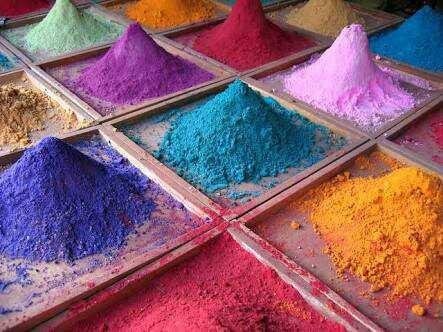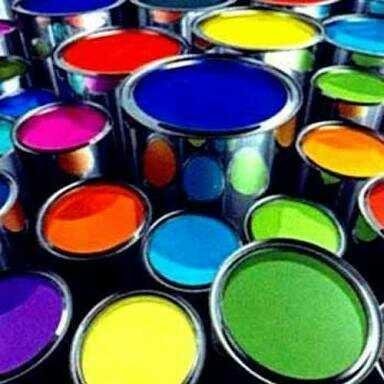INTRODUCTION TO PAINT PRODUCTION
Paints are materials generally used as finishing for other materials. They are used to protect objects like woods, metals and plastered surfaces from weathering, moistures, heats and chemicals. Paint products are essential in every community because of their effects and functions in the environment.
paints are classified into two major groups based on their carrier mediums. They are
Solvent based paints
Water based paints
Many years ago, virtually all paints are solvent based, but the advances in paint technology and the clamp down on the realease of volatile organic compounds (VOC) to the atmosphere made solvent based paints less popular. Mostly, organic solvents are used in this solvent based paints. They include thinners, denatured alcohol and petroleum products. Solvent based paints includes gloss, lacquer paints and auto paints. Solvent based paints drying mechanism is by polymerization. The wet paint reacts with oxygen in the air to form a long chain hard film. Solvents based paints are mostly applied on railings, cabinets, metals etc.
Solvent based paints finish looks like this


image credits: google
Water based paints use water as their carrier medium. they are subdivided into two main categories. they are acrylic paints and Latex paints. Water based paints are more environmentally and user friendly. They dry by evaporation, forming a solid thick film on the painted surface.
Acrylic paints are more durable than latex paints, they contract and expand better. This makes it more durable for exterior paintings. Examples of water based paints incudes, acrylic and latex emulsion, satin, matte emulsion, textured paints, flextured paints e.t.c.
Water based paints finish looks like this


Paint compositions and their functions in paints
Paints generally have four basic components they are
- Pigments
- Binders
- Liquids
- Additives
PIGMENTS
Pigments are finely ground particles that disperse in paints to give it colour, masking properties and coverage. There are two categories of pigments. They are
- Prime pigments
- Extender pigments
Prime pigments are responsible for giving the paint it's colours, ranging from white to every other colour. Generally, pigments come as organic and inorganic. Inorganic pigments are mostly oxides of metals, they appear pale and are more durable for exterior applications because they don't fade off easily. Examples includes Titanium oxide, Antimony oxide, colbalt violet, chromium Oxide, iron oxide e.t.c.Titanium Oxide(TiO2) is the main whitening pigment used in paint industries because It scatters light rays better than Antimony and zinc oxide. It is also an excellent masking agen
Organic pigments are brightly coloured pigments produced from organic dyes. They give paints it's bright and sharp colours and are mostly used in interior applications because of their poor fastness to sunlight. Most organic pigments comes in bright cooured pastes. Examples incudes azo pigments, alizarin, phthalocyanine e.t.c.
Inorganic pigments in pictures

Organic pigments in pictures

image credits: google
Extender pigments. This pigments offers less masking power and are mosty used to aid the masking power of the prime pigments, they are cheap and always used in bulk quantities. Extender pigments usually affect paint properties like texture, sheen, durabiity, strenght of film and colour retention. Examples incudes calcium carbonates (CaCO3) also called chalk, Magnesium Silicate (MgSiO3) also known as talc, aluminium silicates e.t.c.
BINDERS
These compounds binds the pigments and every other materials in the paint. It provides adhesion and strength to the paint after dryness. Binders also provides durability and prevents the dry paint from chalking and flaking. Examples includes Polyvinyl acetate, latex acrylic etc. Some binders are also used as varnishes to provide a though, clear and shiny final coat in applications.
In my next blog, I will talk about the last two components, paint components local/shelf names, paints formulations and methods of production. Watch out!
What we learnt
- Not all paints can be used in exterior applications. The brighter the paint, the less resistant it is to weather and the faster it fades
- Chalking (when dry paints stains the hands like chalk) in dry paints is caused by insufficient binders in the paints.
- Water based paint are more enviromentally friendly.
Re-steemed
Thanks bro.
Sustainability is a critical factor in today's world. If you have any more insights or questions about paints, feel free to share.
Thank you for the informative introduction to paint production! It's fascinating to learn about the different types of paints and their applications. The shift from solvent-based to water-based paints due to environmental concerns is indeed an important development.
When it comes to finding the right paints for various projects, visiting local paint shops can be incredibly helpful. They can offer a wide range of paint products and expert advice to ensure you choose the right one for your specific needs.
It's great to see the paint industry evolving to be more eco-friendly.